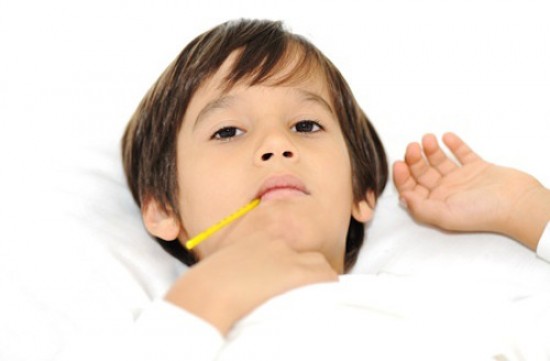Lyme disease is a bacterial infection that is spread through the bite of a black-legged tick. The peak season for Lyme disease is July-September.
In August 2013, a report from the Centers for Disease Control stated that 300,000 Americans contract Lyme disease each year. This is 10 times the amount previously believed by health officials.
Some of them are kids.
What is the most common way to know if your child has Lyme disease?
Lyme disease mimics the flu, but also will cause rashes among your child's body. If you notice a rash, fever, fatigue, muscle and joint aches call your doctor immediately.
How can you prevent tick bites from happening?
The best way to protect your body from being exposed to ticks is to wear clothes that cover your whole body. This may not seem like an ideal option, especially during the hot, humid days of the summer; but it is worth preventing the risk of exposure.
Most importantly, after your child is playing outside in wooded or grassy areas, check their bodies to make sure ticks have not found a spot on their clothing or have latched onto their skin.
What types of treatment options are available if your child does become infected?
If your child has been bitten by a tick and has been diagnosed by your physician, don't panic. The main treatment for Lyme disease is antibiotics such as doxycycline, amoxicillin or cefuroxime.
Chairman of pediatrics at K. Hovnanian Children's Hospital, Steven Kairys, MD, discusses what Lyme disease symptoms to look out for in your child, how to prevent Lyme disease and what treatment options are available.
Lyme Disease in Children
According to the Centers for Disease Control, 300,000 Americans contract Lyme disease each year. Some of them are kids.
Additional Info
- Segment Number: 4
- Audio File: staying_well/1420sw1d.mp3
- Featured Speaker: Steven Kairys, MD
- Organization: Jersey Shore Medical Center
-
Guest Bio:
 A general pediatrician with sub-board specialties in adolescent medicine and child abuse, Dr. Steven Kairys serves as the Chair of Pediatrics at Jersey Shore University Medical Center, the Medical Director of the K. Hovnanian Children's Hospital, and a Professor of Pediatrics at the Robert Wood Johnson Medical School.
A general pediatrician with sub-board specialties in adolescent medicine and child abuse, Dr. Steven Kairys serves as the Chair of Pediatrics at Jersey Shore University Medical Center, the Medical Director of the K. Hovnanian Children's Hospital, and a Professor of Pediatrics at the Robert Wood Johnson Medical School.
Dr. Kairys received his Medical Degree from Temple University, his Master of Public Health from Boston University School of Public Health, and completed his pediatric residency at Dartmouth Medical School. Dr. Kairys came to New Jersey in 1998 after 20 years of pediatric practice in New Hampshire. During his time in New Hampshire, he was President of the New Hampshire Chapter of the AAP and founder and first President of the New Hampshire Alliance for Children and Youth, a statewide advocacy organization.
Dr. Kairys has been the Medical Director and Chairman of the Board for the NJ Pediatric Council on Research and Education (PCORE) since its inception in 1999. Throughout his time as Medical Director, Dr. Kairys has been a medical champion for several PCORE initiatives related to improving pediatric health outcomes and office-based systems change, including: Medical Home, Child Abuse and Neglect Prevention and Lead Poisoning Prevention. As a national leader in pediatric quality improvement and the prevention of child abuse and neglect, Dr. Kairys serves as the Principal Investigator for Strengthening Pediatric Partners, PCORE's first quality improvement (QI) maintenance of certification (MOC) project. His involvement has been instrumental in developing it into a project that improves the quality of care that children and their families receive in pediatric offices across the state.
Dr. Kairys's vision, leadership, and dedication have enabled PCORE to successfully unite diverse stakeholders, including chairpersons of competing hospitals, public health officials, and social service agencies, inviting them into the grassroots of health care—the primary care office, to improve health care systems through public policy and private practice changes. - Length (mins): 10
- Waiver Received: No
- Host: Melanie Cole, MS
Published in
Staying Well
